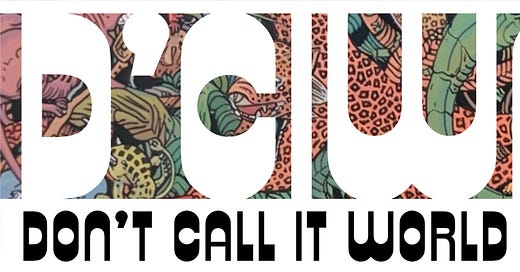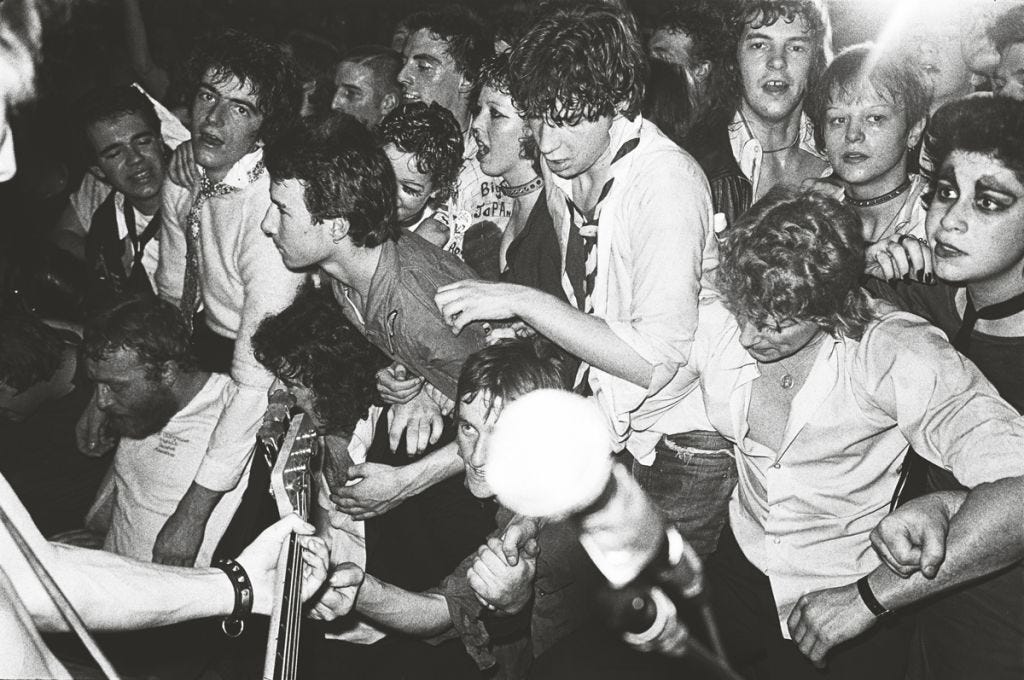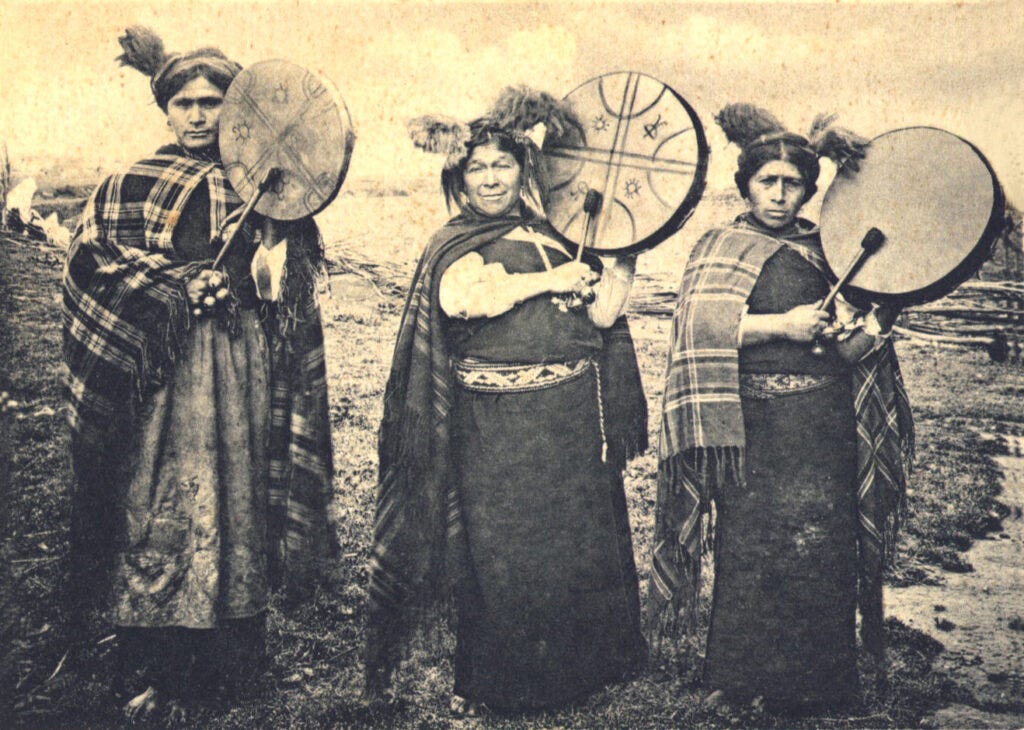Thanks to our new subscribers ! :)
Don’t Call It World Music is a free, independent and curated roundup of music news. Each weekly edition of our newsletter features a handpicked selection of articles related to every kind of music, offering insights into genres from every corner of the globe.
Our mission is to provide visibility to a wide array of issues, musical traditions, artists and genres that are underrepresented or overlooked in mainstream media, generate curiosity and drive traffic to original sources, particularly alternative and independent platforms.
Pitchfork reviews Françoise Hardy's 1971 album La question, considering it a career highlight, delves into her initial hit "Tous les garçons et les filles" which set her apart from the more upbeat yé-yé scene.
All About Jazz profiles Vagif Mustafa-Zadeh, an Azerbaijani jazz pianist and composer considered a pioneer of ethno-jazz in the Soviet Union . The article details his early musical development, influenced by both Azerbaijani mugham and American jazz artists like John Coltrane and Thelonious Monk.
Mugham?
Mugham is a traditional Azerbaijani musical form characterized by a high degree of improvisation, combining classical poetry. It includes a collection of melodies and melodic fragments, often performed by a trio consisting of a singer (khananda) and instrumentalists playing the tar and kamancha.
Mixmag delves into the UK's growing appreciation for baile funk, a Brazilian music genre, while questioning whether this enthusiasm is accompanied by a genuine understanding of its complex social history as a form of cultural empowerment and political expression.
Artists like MC Soffia, a young voice that highlights African-descendant culture through her rhymes, and Rincon Sapiência blend Afro-Brazilian rhythms with a sharp social critique that taps into the sound of African music. They bring a broader contribution to the movement of favela music and identity.
When MC Soffia sang about playing with dolls as a child, she addressed Black children's realities because the doll was Black. Her mother's activism, her experiences with racism, and her studies of Black Brazilian history all influence who she is.
blind-magazine.com presents a profile of photographer Dennis Morris, renowned for his iconic images of rock and reggae legends such as Bob Marley and the Sex Pistols, as well as his documentation of London's Black communities.
treblezine.com offers a tribute to the late Roy Ayers, highlighting his significant contributions to jazz-funk and his lasting influence on hip-hop and neo-soul.
NPR features an interview with the renowned minimalist composer Steve Reich, now 88 years old, reflecting on his long and influential career. The article highlights Reich's central concept of the "pulse" and how his music utilizes interlocking patterns, stemming from his early experiments with tape loops and phasing techniques.
Atlas Obscura presents the work of Tarun Nayar, a musician who connects modular synthesizers to living organisms like mushrooms, fruits, and leaves to transform their bioelectric signals into music.
SAPIENS publishes an essay exploring the connection between heavy metal music and Indigenous revival in Patagonia, Argentina. It examines how Patagonian metal bands, often of Mapuche origin, incorporate Indigenous languages (like Mapudungun and Tehuelche), imagery, and themes into their music, contributing to a process of autoreconocimiento or "self-recognition".
Pan African Music delves into the vibrant balani show phenomenon in Mali, focusing on DJ Diaki and his high-energy "Balani Fou" style. The article portrays the intense atmosphere of these rural musical gatherings where the music, characterized by stripped-down polyrhythms and hyper-tempo, fosters a unique collective experience.
Balani?
Balani music is a genre originating from the Sikasso region of southern Mali, characterized by its use of the balani instrument, a smaller version of the balafon with shorter keys and a higher pitch, often played in high-intensity dance contexts during rural village parties. This music has evolved over time, incorporating electronic elements and influences from other African dance styles, such as kuduro and coupé-décalé.
Les Cahiers d’Afrique de l’Est / The East African Review features an article on the "renaissance" of Akamba benga music in postcolonial Kenya . It argues that Akamba musicians, often starting in church choirs, creatively fused benga with elements of their traditional music, leading to a distinct Kamba benga sound.
“After going home with the church guitars, we would play hit songs like those of Katitu Boys Band, Kyanganga Boys Band, and Kimangu Boys Band, which were very popular at that time. We played these choir guitars in the bush. Unfortunately, the church elders realised what we were doing, and expelled us from the choir.”
Music Is The Answer interviews Russ Cleaver, the founder of the influential clubbing TV show Clubavision, providing a comprehensive look into his journey within the UK dance music scene from the late 1980s onwards.
CLUBAVISION is an television series that holds the distinction of being the most successful weekly dance music culture show, attracting over one million viewers per episode on UK network television. It covered all genres of electronic dance music and is remembered for its authentic portrayal of club culture during the 1990s and early 2000.
Jacobin argues that the Australian "doof" (outdoor dance party) culture has a "Zionist problem" because organizers continue to book artists who support Israel's actions in Gaza. The article contends that this practice clashes with the doof culture's espoused values of peace, love, unity, and respect (PLUR).
Doof?
In Australia, a doof or bush doof refers to an outdoor dance party typically held in remote bushland or on the outskirts of cities, featuring electronic music genres like psychedelic trance and techno, known for their heavy bass drum sound imitated by the onomatopoeic term "doof doof”.
{ feuilleton } presents an artwork titled "M-A-N-C-H-E-S-T-E-R," created by artist and designer John Coulthart, , where each of the ten panels corresponds to a different letter of Manchester, a unique typeface, and a distinct musical trend, group, or venue in the city's history, from the 1960s to the present day.
Mixmag explores the burgeoning electronic music ecosystem in East Africa, known colloquially as "The Oontz," developing independently from the Global North due to factors like visa restrictions and a desire for self-sustainability.
MusicRadar explores the groundbreaking use of the drum machine in popular music, specifically highlighting Robin Gibb (The Bee Gees) 1969 solo hit "Saved by the Bell" arguably the first pop song to prominently feature an electronic beat
"The orchestration is marooned over this primitive drum machine, thudding away. It’s fascinating, it’s chilling, it’s the product of an utterly unique mind”
Field Trip delves into the research process of U.S. novelist David Weiss for his book The Assassination of Mozart, which explores a conspiracy theory involving Antonio Salieri. The article discusses Weiss's construction of a fictional plot around Salieri's alleged involvement in Mozart's demise in 1825.
Sounding Out! offers an article reflecting on the sonic rhetoric of Quincy Jones following his passing, featuring insights from Nasir Jones.
The Guardian profiles James Hamilton, an often-forgotten but pivotal figure who significantly catalyzed British club culture through his influential writing in Record Mirror. The article recounts Hamilton's early career, including his work with the Beatles and as a DJ, before focusing on his groundbreaking column that reviewed club music, created the first UK dance chart, and championed the then-novel concept of seamless mixing between records.
Albumism celebrates the 30th anniversary of E-40’s ‘In A Major Way’, highlighting its significance in his journey to stardom and its unique sound. The article discusses E-40's distinctive rapping style, his development of unique slang, and the album's eclectic production that introduced the "Vallejo sound".
Vallejo sound?
The Vallejo sound emerged from the broader Bay Area hip-hop scene and is characterized by its energetic, uptempo beats, danceable rhythms and distinctive use of regional slang, exemplified by artists like E-40 or SOB x RBE.
NPR's World Cafe explores pivotal moments in music history from 1950 to 1974, emphasizing the significant contributions of women artists across various genres, including artists like Clara Ward, Big Mama Thornton, The Shirelles, Wendy Carlos, and Carole King.
Passion of the Weiss reviews a selection of notable DJ sets from February 2025.
Black Rave Culture, a critical outfit of the east-coast club circuit, supplied a three-hour survey of house, techno, UKG, 3-step, and so many more quick-and-tight dancefloor idioms.
“stutter-stepping east-coast club and screwfaced UKG, bass-blasted ghetto house and ebullient 3-step, whip-cracking breakbeat and mile-a-minute juke”
Geo explores the diverse and unique Ramadan traditions observed across the Muslim world. From the pre-Ramadan maahefun feast in the Maldives to the debaa dance in Mayotte, the Yaremezan singers in Turkmenistan or the bubu sounds of Sierra Leone, the piece showcases the rich tapestry of Islamic practices globally.
Bubu?
A unique tradition in Sierra Leone is bubu music, once linked to witchcraft but now a key part of Ramadan processions, played using bamboo flutes and metal pipes to enhance the festive spirit.
Backseat Mafia reviews "Album Review: Various Artists – Krautrock Eruption: An Introduction to German Electronic Music 1970-1980".
UKF profiles Michael Bailey, a veteran of jungle and drum & bass, It details how his new EP is a tribute to the Detroit and Chicago house and techno sounds that influenced the UK's drum & bass scene, crafted with analogue gear.
Musique Journal theorizes about the highly theoretical nature of punk hardcore, questioning whether it is simply a theory disguised as music . The article explores the idea that hardcore's fast, short bursts of music and seemingly neutral aesthetic might be a satirical commentary on the standardization of pop music production, pushing its restrictive formulas to an absurd extreme.















